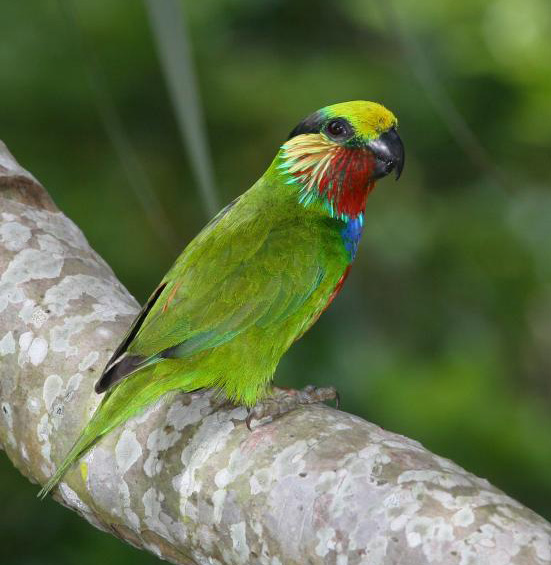In the 5 species of fig parrot (Genus Opopsitta and Psittaculirostris) we find some of the most colorful of all Psittacines, all of which need much attention in terms of captive breeding. Several, including the gorgeous Edward’s fig parrot, are kept in captivity, but in none is reproduction considered routine. However, their small size suits them well to experienced aviculturists who are looking to become involved an important conservation effort, and interest is gradually increasing.
Description and Range
 Fig parrots are small, stocky, colorful birds limited in distribution to New Guinea, northeast Australia and some nearby islands.
Fig parrots are small, stocky, colorful birds limited in distribution to New Guinea, northeast Australia and some nearby islands.
They have unusually large, broad bills, the upper mandible of which is distinctively notched. All are considered threatened in the wild. Despite this, they are under-represented in both zoo (I worked with only a very few during my long career) and private collections.
Captive Husbandry
Fig parrots have bred in both large indoor cages and outdoor aviaries.
Much has been learned about their husbandry in recent years, with the need for Vitamin K supplementation being an important discovery. Most require a wide variety of fruits, especially figs, but lorikeet nectar mixes show great promise as a dietary staple. Fig parrots take a bit of seed as well, but such should be withheld from breeding adults as it tends to clog the chicks’ crops.
Fig parrots housed in outdoor aviaries have the charming habit of bathing by sliding down large, wet leaves.
Further Reading
You can read about the Australia Zoo’s effort to help the critically endangered Coxen’s fig parrot at http://www.steveirwinmemorialfund.net/our-animals/animal-diaries/index.php?department=01&month=december&year=2005.
Image referenced from Wikipedia and originally posted by Tomfriedel
 That Bird Blog – Bird Care and History for Pet Birds
That Bird Blog – Bird Care and History for Pet Birds


